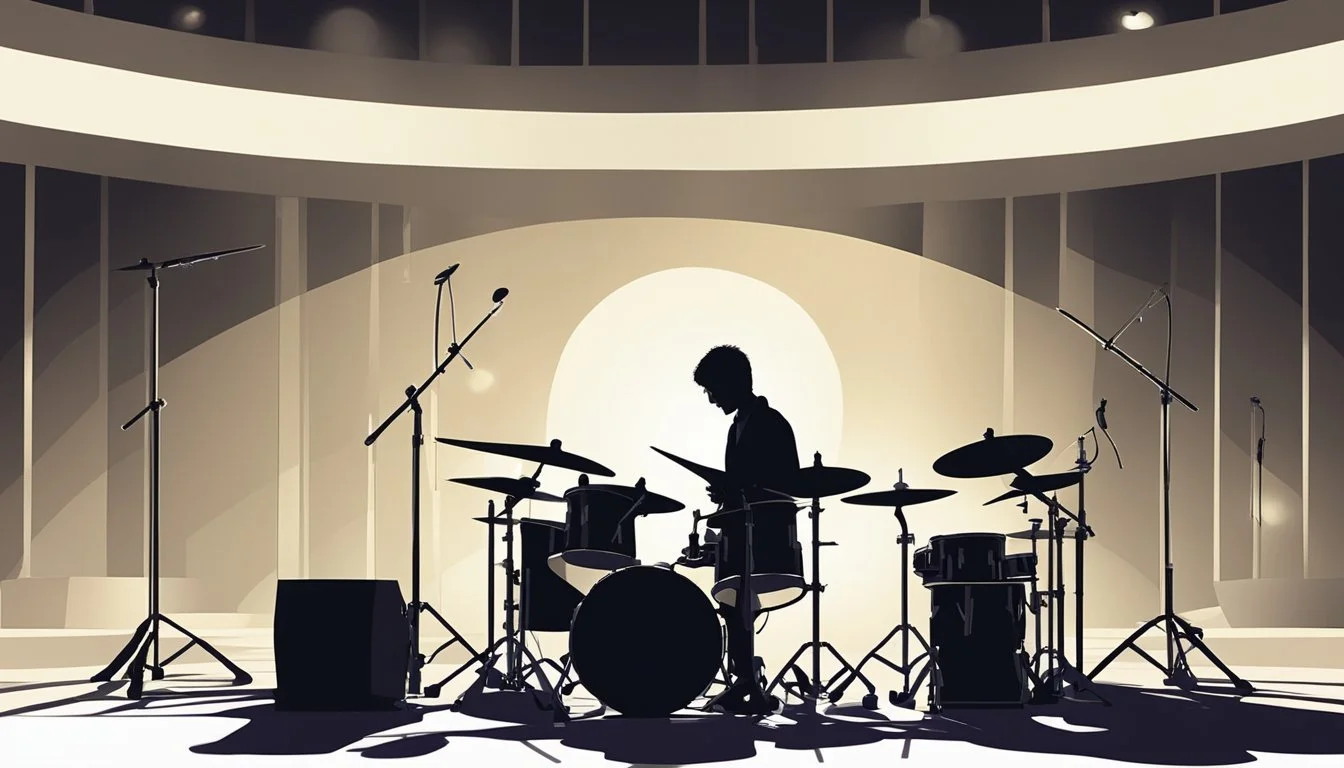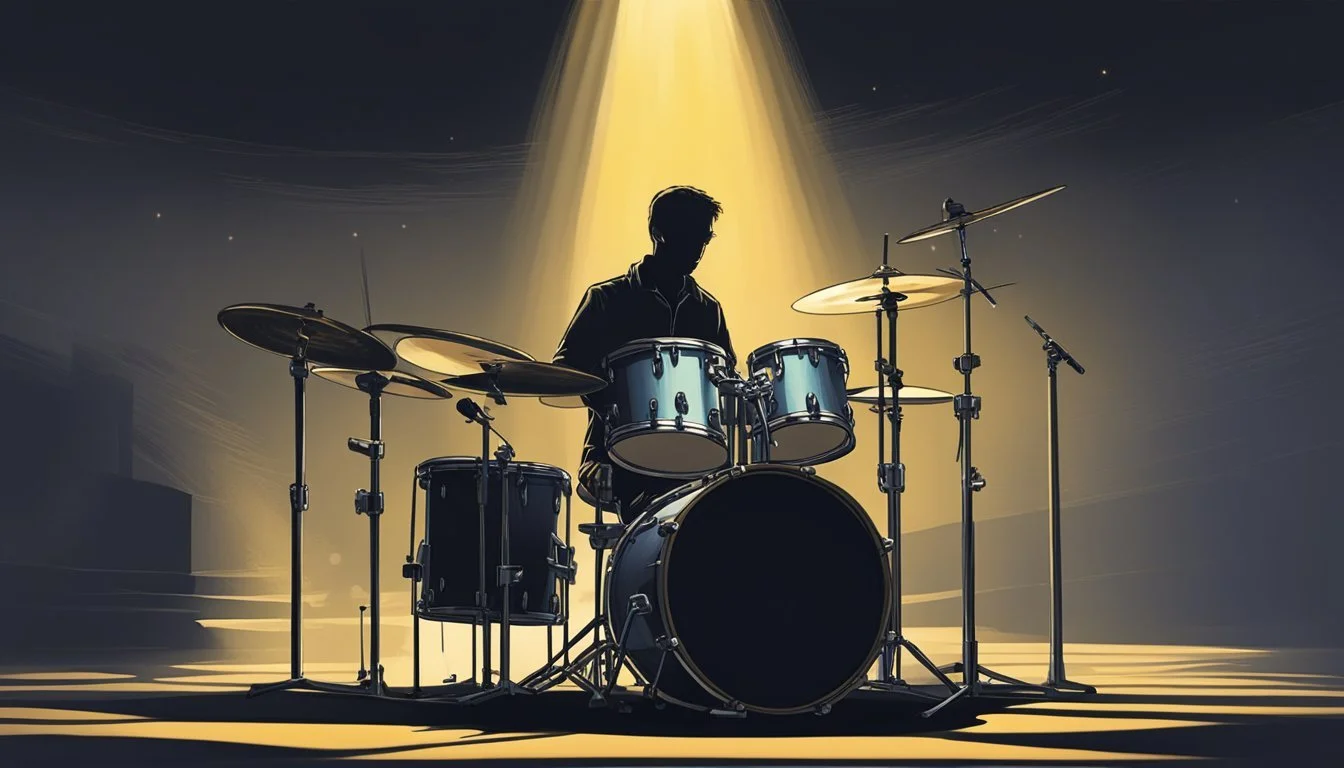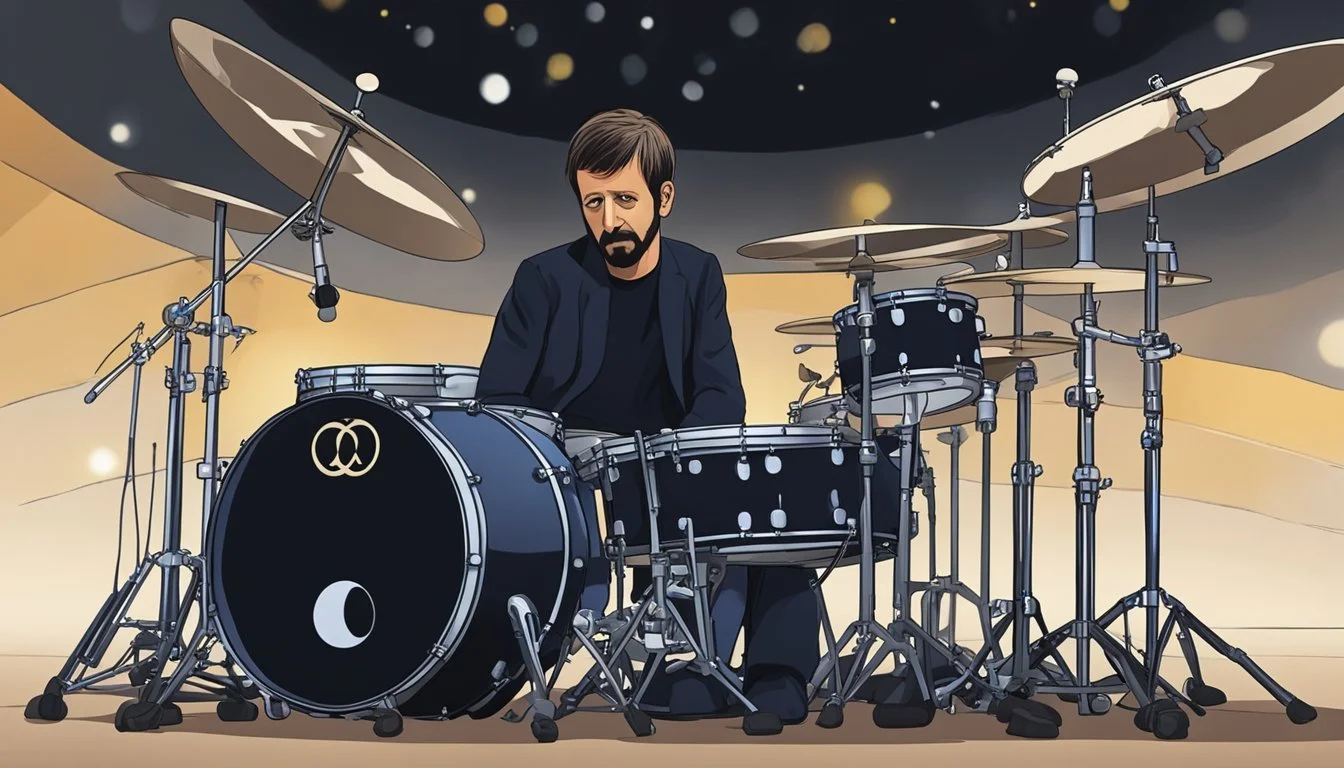Beatles' Blues: Ringo Starr's Battle with Depression
Drummer's Mental Health Journey Revealed
Ringo Starr's journey with The Beatles was filled with incredible highs, but also personal struggles. The drummer faced battles with depression and substance abuse during and after the band's meteoric rise to fame. Despite being the only Beatle to remain close to all three of his bandmates after their split in 1970, Starr grappled with feelings of insecurity and uncertainty about his future in music.
The transition from being part of the world's most famous band to forging a solo career proved challenging for Starr. He felt "so insecure" stepping into the role of bandleader for Ringo and the All-Stars, yet his desire to create something new pushed him to take risks and showcase his adaptability. This period of reinvention coincided with Starr's efforts to overcome his personal demons.
Starr's experiences with depression and addiction have become an important part of his story, highlighting the often-unseen struggles behind the glitz and glamour of stardom. His journey to sobriety and mental well-being serves as an inspiration to many, demonstrating that even at the height of fame, personal battles can be fought and won.
The Struggles of Stardom
Ringo Starr's journey as a Beatle brought immense fame but also significant personal challenges. His experiences highlight the often unseen toll of celebrity life.
Ringo Starr's Personal Battles
Ringo Starr faced numerous personal struggles during and after his time with The Beatles. The pressures of constant touring and public scrutiny took their toll on his mental health.
Starr often felt overshadowed by his bandmates, which affected his self-esteem. He struggled with feelings of inadequacy as a drummer, despite his crucial role in the band's success.
The breakup of The Beatles in 1970 hit Starr hard. He found himself adrift without the structure and camaraderie of the group.
Dealing with Fame and Expectations
The sudden rise to global stardom brought unexpected challenges for Starr. Fans and media constantly demanded his time and attention, leaving little room for a personal life.
Starr felt pressure to maintain the "funny Beatle" persona, which sometimes conflicted with his true feelings. This disconnect between public image and private reality caused internal stress.
The expectations to constantly produce hit songs and albums added to Starr's anxiety. He worried about living up to the band's reputation and his own previous successes.
The Onset of Depression
As the demands of fame increased, Starr began to experience symptoms of depression. He often felt sad and overwhelmed, struggling to find joy in his work and personal life.
The pressure to maintain a cheerful public image while dealing with inner turmoil exacerbated his mental health issues. Starr found it difficult to express his true feelings.
To cope with his depression, Starr turned to alcohol. This temporary escape eventually developed into a serious addiction, further complicating his emotional state.
Starr's depression deepened after The Beatles' breakup. The loss of his primary support system and creative outlet left him feeling lost and uncertain about his future.
Historical Context
The Beatles' era and Ringo Starr's role in the band profoundly shaped his life and career trajectory. His transition after the group's breakup marked a challenging period that influenced his mental health.
The Beatles' Era
The 1960s saw The Beatles rise to unprecedented fame. Their innovative music and cultural impact revolutionized the industry. The band's success brought immense pressure and scrutiny.
Beatlemania swept across the globe, with fans clamoring for more. Album releases like "Sgt. Pepper's Lonely Hearts Club Band" pushed musical boundaries. The group's creativity flourished, but tensions also grew.
By the late '60s, personal and creative differences emerged. The once-tight unit began to fracture, setting the stage for their eventual split in 1970.
Ringo's Role in The Beatles
Ringo joined The Beatles in 1962, replacing Pete Best. His distinctive drumming style became integral to the band's sound. He contributed vocals to songs like "With a Little Help from My Friends" and "Octopus's Garden".
Despite his talents, Ringo often felt overshadowed by his bandmates. He struggled with feelings of inadequacy and imposter syndrome. These insecurities would later contribute to his battles with depression.
Ringo's affable personality helped mediate conflicts within the group. He played a crucial role in maintaining harmony during tense recording sessions.
Post-Beatles Transition
The Beatles' breakup in 1970 hit Ringo hard. He lost not just bandmates, but a support system and sense of purpose. This sudden change triggered a period of uncertainty and emotional turmoil.
Ringo launched a solo career, releasing hit singles like "It Don't Come Easy". However, he struggled to match the success and recognition he enjoyed with The Beatles. This disparity fueled feelings of self-doubt and inadequacy.
The 1970s saw Ringo grappling with his identity outside the band. He turned to alcohol to cope with depression, a habit that would persist for years. This period marked the beginning of a long struggle with mental health and addiction.
Musical Achievements
Ringo Starr's musical journey extends far beyond his role as The Beatles' drummer. His distinctive playing style, collaborations with diverse artists, and successful solo career have solidified his place as a respected musician in his own right.
Ringo Starr's Musicianship
Ringo's drumming technique, characterized by its steady rhythm and creative fills, became a cornerstone of The Beatles' sound. His left-handed playing on a right-handed drum kit contributed to his unique style. Starr's musicianship extends beyond percussion; he's a competent pianist and has showcased his skills on various instruments throughout his career.
Ringo's songwriting abilities, often overshadowed by Lennon-McCartney, produced notable tracks like "Octopus's Garden" and "It Don't Come Easy." His distinctively warm vocals featured on Beatles classics such as "With a Little Help from My Friends" and "Yellow Submarine."
Collaborations and Influences
Starr's collaborative spirit led him to work with a wide array of musicians. His foray into country music, influenced by artists like Pete Drake, resulted in the 1970 album "Beaucoups of Blues" recorded in Nashville. This project showcased Ringo's versatility and willingness to explore different genres.
Notable collaborations include:
George Harrison on "It Don't Come Easy"
Paul McCartney on "Walk With You"
Bob Dylan on "Watchin' the River Flow"
These partnerships allowed Starr to evolve as an artist and expand his musical repertoire beyond rock and pop.
Solo Ventures
Ringo's solo career took off in the 1970s with a string of hit singles. His self-titled 1973 album "Ringo" reached commercial and critical success, featuring all his former Beatles bandmates as guest musicians. Notable solo hits include:
"It Don't Come Easy" (1971)
"Photograph" (1973)
"You're Sixteen" (1973)
Starr continued to release albums throughout the decades, with "Time Takes Time" (1992) marking a critical comeback. His All-Starr Band tours, featuring rotating lineups of established musicians, have been ongoing since 1989, allowing him to showcase both his Beatles-era hits and solo material.
Solo Career and Later Years
Ringo Starr's post-Beatles journey saw him forge a unique path in the music world. His solo career spanned decades, marked by album releases, the formation of his All-Starr Band, and a lasting impact on rock music.
Album Releases and Evolution
Ringo's first solo album, "Sentimental Journey," debuted in 1970. It featured covers of pop standards, showcasing his versatility beyond rock. His second album, "Beaucoups of Blues," released the same year, explored country music.
In 1973, Ringo achieved his greatest solo success with "Ringo." The album included collaborations with his former bandmates and produced hit singles like "Photograph" and "You're Sixteen."
Throughout the 1970s and 1980s, Ringo continued to release albums, experimenting with various musical styles. His work during this period demonstrated his growth as a songwriter and performer.
The Formation of the All-Starr Band
In 1989, Ringo Starr formed the All-Starr Band, a rotating group of musicians. This concept allowed him to tour regularly and collaborate with diverse artists.
The band's lineup changed for each tour, featuring notable musicians from various rock acts. This format gave Ringo the opportunity to perform Beatles classics, his solo hits, and songs from the guest artists' catalogs.
The All-Starr Band tours became a staple of Ringo's later career, keeping him active in the music scene and connecting him with new audiences.
Legacy and Continued Influence
Ringo's solo career solidified his status as a respected musician beyond his Beatles fame. His drumming style continued to influence new generations of musicians.
In the 2000s and 2010s, Ringo remained active, releasing albums and touring. He received numerous accolades, including induction into the Rock and Roll Hall of Fame as a solo artist in 2015.
Ringo's commitment to peace and love became central to his public persona. He continued to use his platform to promote these ideals through his music and public appearances.
His enduring popularity and musical contributions ensured that Ringo Starr remained a beloved figure in the music world long after the Beatles' era.
Personal Growth and Recovery
Ringo Starr's journey to overcome depression and addiction led to profound personal growth. His recovery process involved confronting his demons and rediscovering his passion for music and art.
Overcoming Alcoholism
Ringo Starr's battle with alcoholism reached its peak following The Beatles' breakup. He turned to heavy drinking as a coping mechanism for depression. In 1988, Starr made the courageous decision to enter rehab, marking a turning point in his life.
The rehabilitation process was challenging but transformative. Starr embraced sobriety and developed healthier coping strategies. His commitment to recovery allowed him to rebuild relationships with his former bandmates and family.
Starr's sobriety became a source of strength. He openly discussed his struggles, inspiring others facing similar challenges. His experience highlighted the importance of seeking help and the possibility of overcoming addiction.
Finding Stability through Art
Art played a crucial role in Ringo Starr's recovery and personal growth. Music, particularly drumming, provided a creative outlet and a sense of purpose. Starr channeled his emotions into his solo career, producing meaningful work like "Early 1970," which reflected on The Beatles' breakup.
Starr also discovered a passion for painting. This new artistic pursuit offered a meditative practice and a way to express himself beyond music. His colorful, abstract artworks became another avenue for personal healing and growth.
The creation of "Octopus's Garden" exemplified Starr's artistic journey. The song's whimsical lyrics and upbeat melody reflected his growing sense of peace and stability. It became a beloved track, showcasing Starr's talent beyond his role as the Fab Four's drummer.
Cultural Impact
Ringo Starr's influence extends far beyond his musical contributions. His unique persona and achievements have left an indelible mark on popular culture and society.
The Honorary MBE
Ringo Starr received an honorary Member of the Order of the British Empire (MBE) in 2018. This prestigious award recognized his significant contributions to music and charity work. The ceremony at Buckingham Palace celebrated Starr's lifelong dedication to the arts and philanthropy.
Queen Elizabeth II personally presented the honor to Starr. This recognition highlighted his enduring impact on British culture and his role in shaping the global music landscape. The MBE also acknowledged Starr's ongoing efforts to promote peace and support various charitable causes.
Ringo's Influence on Pop Culture
Ringo Starr's distinctive style and personality have significantly shaped pop culture. His witty remarks and charming demeanor endeared him to fans worldwide. Starr's fashion choices, including his iconic rings and hairstyles, became trendsetting looks that many emulated.
His catchphrases, such as "Peace and Love," became synonymous with his public image. Starr's influence extended to film and television, where he appeared in various roles showcasing his comedic timing. His drumming technique inspired countless musicians and helped elevate the role of drummers in rock bands.
In Liverpool, Starr remains a beloved figure. The city honors him through various tributes, including statues and street names. His success story continues to inspire aspiring musicians from his hometown and beyond.
Interpersonal Relationships
Ringo Starr's journey with The Beatles was marked by complex dynamics and creative collaborations. His relationships within and outside the band played a crucial role in shaping his musical career and personal life.
Bandmate Dynamics
The Beatles' internal relationships were a mix of camaraderie and tension. Ringo Starr often found himself in a unique position as the last member to join the group. He developed a close bond with Paul McCartney, who helped him integrate into the band's dynamic. George Harrison and Ringo shared a passion for spirituality, which strengthened their friendship.
John Lennon's relationship with Ringo was marked by mutual respect, though it had its ups and downs. Despite occasional conflicts, the band maintained a professional approach to their work. Ringo's easygoing nature often helped diffuse tensions during recording sessions.
Collaboration with Other Artists
Outside The Beatles, Ringo Starr cultivated numerous musical relationships. He worked with country music legend Charlie Daniels, exploring different genres and expanding his musical horizons. Collaborations with Ben Keith, a renowned pedal steel guitarist, added depth to Ringo's solo projects.
These partnerships allowed Ringo to showcase his versatility as a drummer and songwriter. He often invited former bandmates to contribute to his solo albums, maintaining connections with Paul, George, and John even after The Beatles' breakup. These collaborations helped Ringo evolve as an artist and establish his individual identity in the music industry.
The Later Tours
Ringo Starr's post-Beatles touring career showcased his enduring musical legacy and connection with fans. His performances spanned decades, bringing together multiple generations of music lovers around the world.
Performing Across Generations
Ringo Starr's All-Starr Band, formed in 1989, became a platform for multi-generational musical collaboration. The rotating lineup featured veteran musicians from various eras, creating a unique blend of styles and hits. Starr's drum solos and Beatles classics remained crowd favorites, while band members contributed their own chart-toppers.
Tours typically lasted several months, covering North America, Europe, and Asia. Venues ranged from intimate theaters to large arenas, accommodating diverse audience sizes. The shows' setlists carefully balanced Starr's solo work, Beatles hits, and songs from other band members.
Connecting with Fans Worldwide
Starr's tours fostered a strong bond with his international fanbase. Meet-and-greet sessions before concerts allowed fans to interact personally with the former Beatle. These encounters often included photo opportunities and brief conversations, creating lasting memories for attendees.
Social media engagement became a key component of Starr's touring strategy. Regular updates on platforms like Twitter and Instagram kept fans informed about tour dates, behind-the-scenes moments, and Starr's reflections on each city visited.
Merchandise sales at concerts included exclusive items tied to specific tours, appealing to collectors and casual fans alike. T-shirts, posters, and limited edition vinyl records were popular offerings.
Exploration of Genres
Ringo Starr's musical journey extended far beyond his iconic role as The Beatles' drummer. He ventured into diverse genres, experimenting with new sounds and styles throughout his solo career.
Country Music Endeavors
Ringo Starr's affinity for country music emerged early in his career. His upcoming album "Look Up" marks a significant foray into the genre. The project, initially conceived as a single song, evolved into a full-length country record. Starr's enthusiasm for this new direction reflects his willingness to embrace different musical styles.
His country influences can be traced back to his time with The Beatles. Ringo's songwriting contributions to the band occasionally incorporated country elements, though these were rarely recorded. This early exposure laid the groundwork for his later exploration of the genre.
Diversification of Musical Style
Starr's solo career showcased his versatility as a musician. After The Beatles' breakup, he faced the challenge of establishing himself as a bandleader. The formation of Ringo and the All-Stars demonstrated his adaptability and desire to create something new.
His solo work often blended various genres, including rock, pop, and country. This musical diversity is evident in albums like "All Things Must Pass," where Starr collaborated with other artists to expand his sound. Buzz Rabin, a notable producer, played a role in shaping Starr's solo material.
Ringo's willingness to take risks and experiment with different styles has been a hallmark of his post-Beatles career. This openness to musical exploration has allowed him to maintain relevance and continue creating new material decades after his initial rise to fame.









